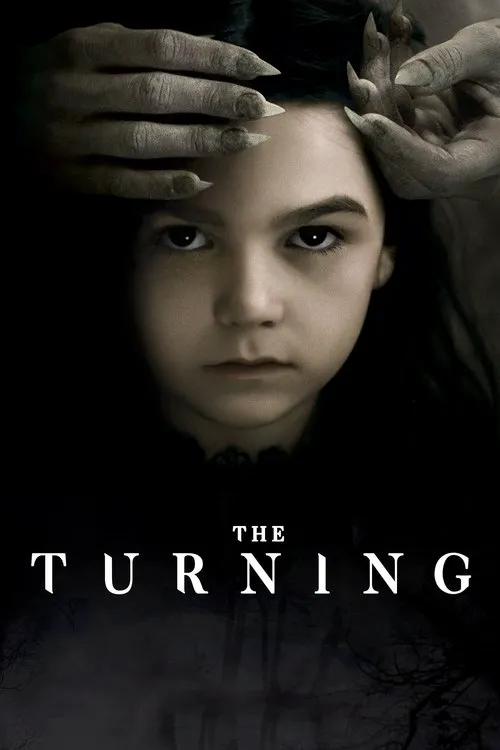The Turning

Plot
The 2020 film 'The Turning', directed by Floria Sigismondi, offers a captivating and eerie take on Henry James' classic gothic novella, 'The Turn of the Screw'. The story revolves around Kate (Mackenzie Davis), a determined and idealistic young woman who, in an effort to make a change in her life, decides to leave her teaching profession behind. Taking on the role of a private tutor and governess for the eccentric and charismatic Flora and Miles Colburn (Brooklynn Prince and Finn Wolfhard) at the isolated Essex countryside estate of Bly Manor, Kate is enticed by the prospect of a fresh start and a substantial salary. As she settles into her new home, she becomes increasingly fascinated by the enigmatic and somewhat distant aristocratic couple, Mr. and Mrs. Colburn, who have hired her to care for their wards. Upon arrival, Kate is shown a beautiful and tranquil world that seems almost surreal. The estate, with its grand halls and beautifully manicured gardens, appears to be a haven of perfection, reflecting the elegance and refinement of its former occupants. However, as Kate begins to delve deeper into the lives of the children in her care, she starts to notice an air of foreboding that hovers over the house and its inhabitants. Flora, one of the children, initially greets Kate with an unsettling sense of detachment, but as Kate begins to establish a bond with her, she senses a deep and complex inner world beneath the child's stoic exterior. Meanwhile, Miles, the other child, proves to be more receptive to Kate's affections, and their interactions fill Kate with a sense of hope and affection. However, the more time she spends with them, the more Kate starts to feel an inexplicable and overwhelming presence in the house that seems to emanate from Flora. Kate soon realizes that the atmosphere in the house is charged with an unsettling energy, which she finds difficult to define but feels deeply. As she observes Flora's increasingly erratic behavior and begins to suspect that the child is under some kind of malevolent influence, Kate becomes convinced that the house is harboring a dark and supernatural presence. As Kate's grip on reality begins to slip, she becomes convinced that the children are being manipulated by a malevolent entity, which she can only assume is an expression of their repressed trauma or a dark reflection of the adults in their lives. Kate resorts to drastic measures, confining the children to their rooms in an attempt to protect them from the perceived evil that lurks within the manor. However, as the events that unfold throughout the film suggest, Kate's perception of reality is likely distorted, and the children's behaviors can be seen as a manifestation of her own projection and psychological fragility. In the midst of the chaos and uncertainty that ensues, Kate begins to lose her grip on her own sanity, struggling to separate fact from fiction. Throughout the film, Sigismondi masterfully weaves together elements of psychological realism and supernatural horror, expertly blurring the lines between what's real and what's perceived. As Kate's downward spiral accelerates, the once idyllic atmosphere of Bly Manor descends into chaos, and the viewer is left with a haunting sense of uncertainty. The film raises important questions about the nature of reality and the reliability of perception, inviting viewers to question the narrative's authenticity and their own capacity for self-deception. Ultimately, 'The Turning' presents a complex exploration of the fragility of the human psyche and the blurred boundaries between sanity and madness, making it a thought-provoking and unsettling film that lingers in the viewer's mind long after the credits roll.
Reviews
Recommendations




